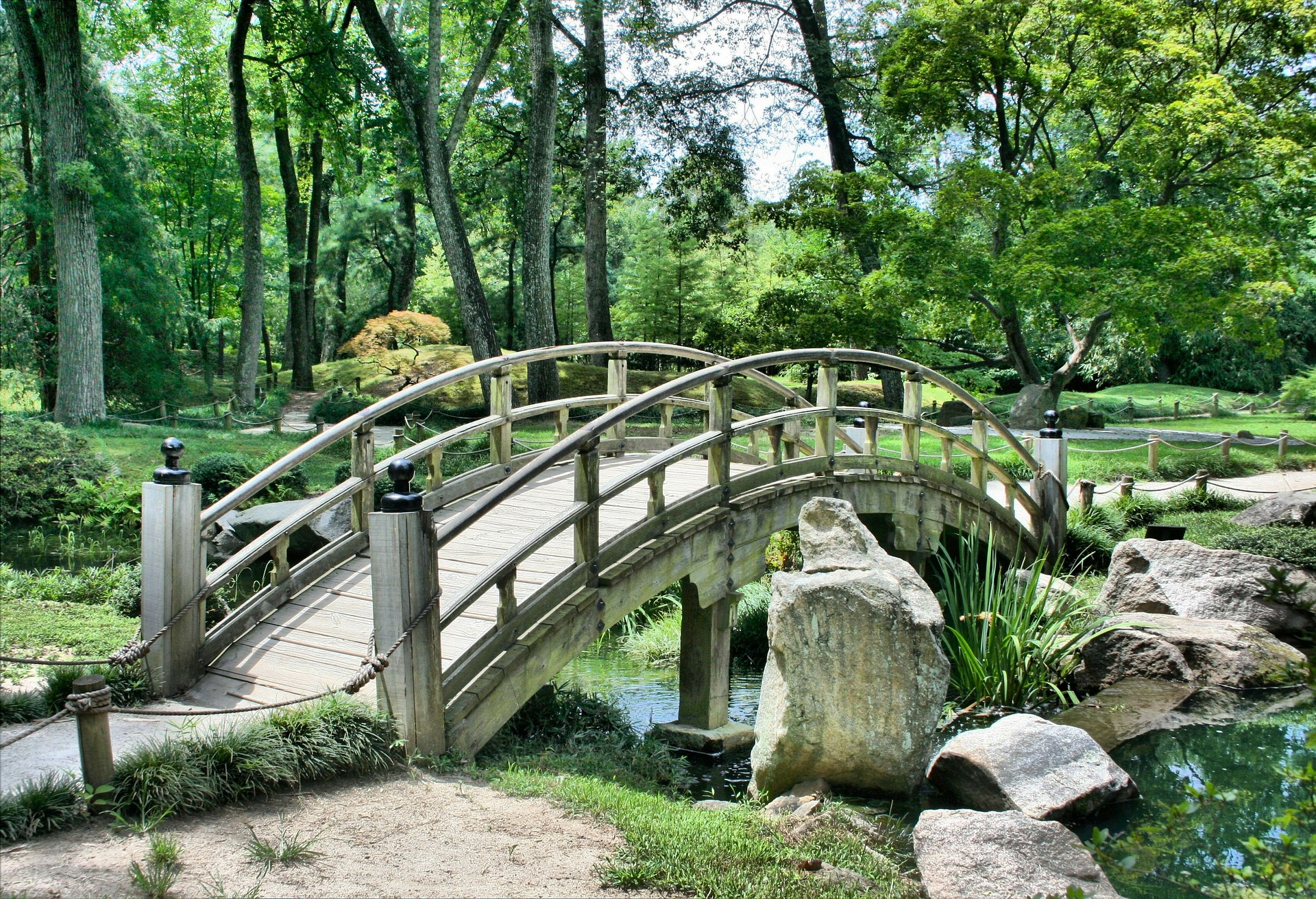Japanese Garden
Very different from western or American sty gardens, japanese gardening is a cultural form of gardening that is meant to produce a scene that mimics nature as much as possible by using trees, shrubs, rocks, sand, artificial hills, ponds, and flowing water as art-forms. The Zen and Shinto traditions are both a large part of Japanese gardening and, because of this; the gardens have a contemplative and reflective state of mind. Japanese gardening is more meditational and soul soothing.
Japanese gardening consists of three basic methods for scenery. The first of these is reduced scale, this is simply the art of taking an actual scene from nature, mountains, rivers, trees, and all, and reproducing it on a smaller scale. An example of this would be using white sand to suggest the ocean. Borrowed views refers to artists that would use something like an ocean a forest as a background, but it would end up becoming an important part of the scene.
There are essentially two types of Japanese gardening: tsukiyami, which is a hill garden and mainly composed of hills and ponds. The other is hiraniwa, which is basically the exact opposite of tsukiyami: a flat garden without any hills or ponds.
Basicly Japanese gardening include rocks, gravel, water, moss, stones, fences, and hedges. Rocks are most often used as centerpieces and bring a presence of spirituality to the garden. According to the Shinto tradition rocks embody the spirits of nature. Gravel is used as a sort of defining surface and is used to imitate the flow of water when arranged properly. Stones are used to create a boundary and are sculpted into the form of lanterns. Water, whether it be in the form of a pond, stream, or waterfall, is an essential part of a Japanese garden. It can be in the actual form of water or portrayed by gravel, but no matter what form water it is, it’s crucial to a Japanese gardens balance.
Bonsai plants are the main part of a Japanese Garden. Bonsai is the art of training everyday, average plants, such as Pine, Cypress, Holly, Cedar, Cherry, Maple, and Beech, to look like large, old trees just in miniature form. These trees range from five centimeters to one meter and are kept small by pruning, re-potting, pinching of growth, and wiring the branches.
A Japanese garden is sure to bring about many different feelings and is definitely a transforming experience.

